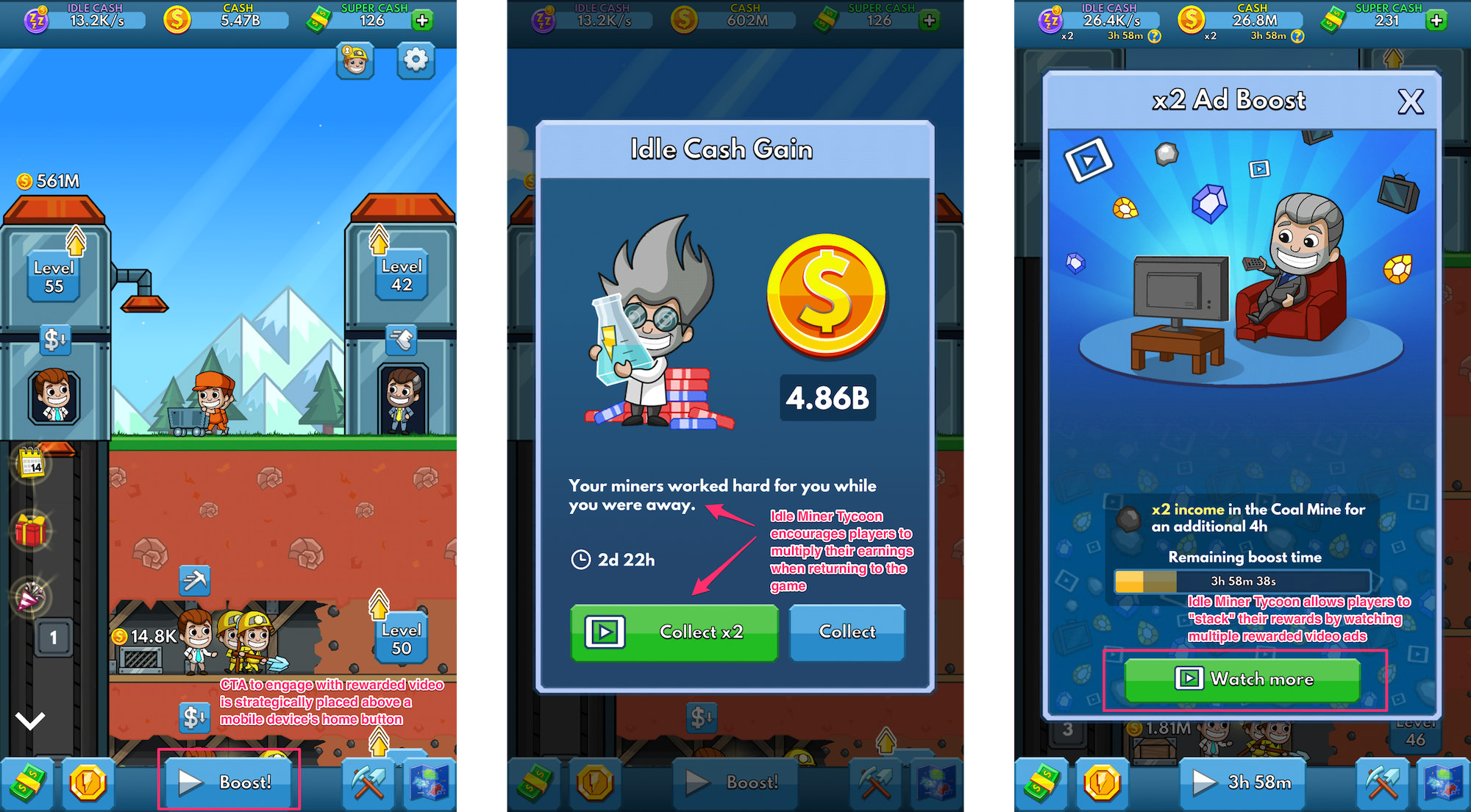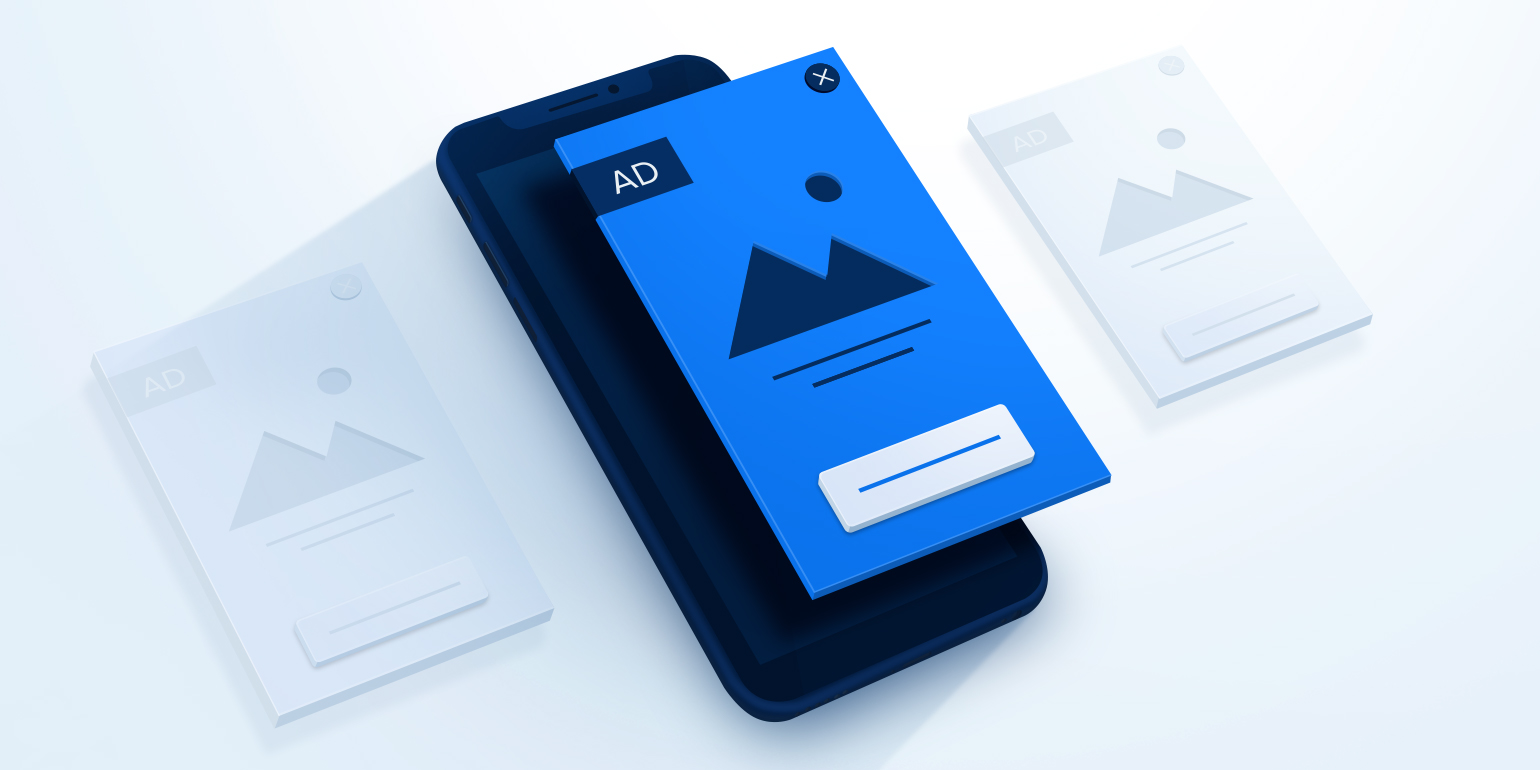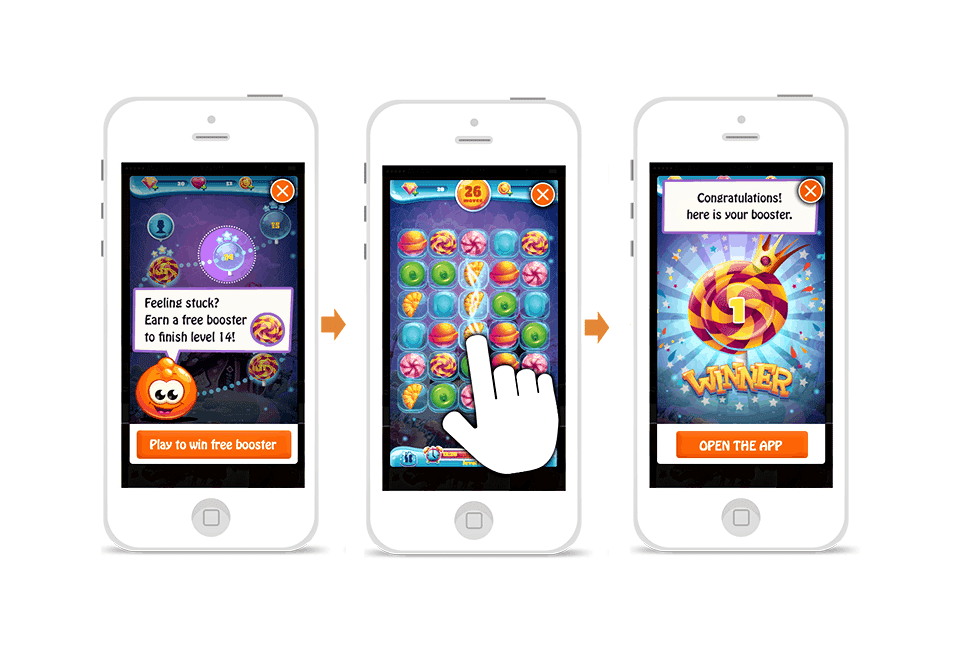Gamebeat가 전한 소식이다.
모바일 광고는 먼 길을 왔다. 최초의 SMS 메시지는 1992년에 전송되었으나 2000년에 최초의 SMS 광고가 발송되었으니 모바일 광고의 잠재력을 활용하기까지 8년이 걸린 것이다. 이후, 특히 2007년 아이폰(iPhone)이 탄생한 이후로 모바일 광고의 가속화와 광고 형식의 확산은 놀라운 수준이었다.
2020년 전 세계 모바일 광고 수익은 2,762억 1천만 달러(Statista 추산)에 달했다. 다양한 이용 가능한 포맷을 갖은 스마트폰은 다른 미디어보다 더 나은 광고 플랫폼이 되었다. 그러나 모바일 광고 형식이 완벽하지는 않다. 모바일 광고 형식이 사용자 경험에 해롭다는 인식이 업계 일부에서 지속되고 있는 가운데, 글로벌 모바일 광고 인벤토리의 약 40% 가량은 보는 사람이 없는 것이 일반적이라고 알려졌다.
그렇다면 2021년 현재 가장 많이 활용되는 모바일 광고 형식은 무엇일까?
보상형 동영상 광고

애드콜로니(AdColony)는 유럽과 중동, 아프리카에서 보상 동영상 포맷을 출시하면서 모바일 게임 수익화를 위한 새로운 광고 생태계와 비즈니스 모델을 만들었다. 기본적으로 보상형 동영상 광고는 플레이어들이 게임 내 생명, 아이템 또는 가상 화폐를 대가로 비디오 광고를 보게끔 만든다. 일반적으로 앱 내 구매(IAP) 또는 게임 진행을 통해서만 사용할 수 있다.
이러한 보상형 광고는 개발자와 게이머 모두에게 계속해서 인기를 끌고 있다. eMarketer의 조사에 따르면, 약 79%의 개발자들이 해당 광고 유형을 가장 효과적인 광고 포맷이라고 생각하며, 미국 모바일 게이머들의 72%는 중간 광고보다는 옵트인 보상 비디오 광고를 선호한다. 또한, 보상 비디오를 시청하는 플레이어들은 IAP(앱 내 결제)를 완료할 가능성이 6배 더 높은 것으로 알려졌다.
전면 광고

플레이어블 광고

CrossInstall 및 AppOnboard와 같이 초기에 대중화된 플레이어블 광고는 모바일 게임에서 “앱을 설치하기 전에 앱을 맛보기로 경험하는” 메커니즘으로 사용된다. 보통 해당 광고는 사용자가 전체 게임을 설치하도록 게임 플레이의 일부를 제공한다. 플레이어블 광고를 통해 개발자는 게임 플레이 경험의 재미로 잠재 고객에게 서비스를 제공하고 게임의 핵심 메커니즘을 소개하여 고객생애가치(LTV)가 높을 가능성이 크고 게임을 빠르게 제거할 가능성이 낮은 사용자를 확보할 수 있다. 그러기에 플레이어블 광고는 실제로 플레이되는 게임보다 높은 수준으로 제작되는 게 일반적이다.
이러한 플레이어블 광고의 다른 사용은 Burger King앱의 “The Angriest Whopper”와 같은 캠페인이 대표적이다. 독일 시장에서 플레이어블 광고를 사용하여 사용자에게 20초 이내에 할라피뇨 20개를 모아 할인 쿠폰을 잠금 해제하도록 했다. 해당 캠페인은 35~40%의 높은 평균 클릭률(CTR)을 달성했다.
인 게임 광고

타임라인에 있는 다른 트윗의 형태와 기능과 일치하는 트위터 앱의 홍보 게시물인 “네이티브” 광고를 본 적이 있을 것이다. 인플레이 광고는 모바일 게임 내에 광고를 넣는 광고 형식이다. 최근 높은 가시성으로 검증된 이러한 가상 광고판과 비디오 광고는 보통 게임 내의 스포츠 경기장이나 경주 트랙에 자연스레 나타난다. 영국에 본사를 둔 유방암 인식 자선단체인 CoppaFeel!은 최근 Admix로 18~24세 여성을 대상으로 하여 다양한 장르의 모바일 게임 콘텐츠에 CoppaFeel!의 광고 콘텐츠를 삽입하는 캠페인을 진행했다.
해당 광고는 자연스럽게 게임 내에 등장함으로써, 인플레이 광고는 게임 플레이 경험을 멈추거나 바꾸지 않는다. 그러기에 해당 광고 유형은 다른 포맷에 비해 플레이어에게 친숙하고 브랜드 친화적으로 다가간다. Indie studio Hypermasters는 인플레이 광고를 진행함으로써 광고 수익이 22% 증가했다고 보고했다. 게다가 Neon Play의 Idle Army Base: Tycoon game은 인플레이 광고의 숫자가 많더라도 한달 간 플레이어 유지나 세션 시간에 영향을 미치지 않는다는 것을 보여주는 통계를 제시했다.
오디오 광고

모바일 광고 장면에 흥미롭게 추가된 오디오 광고는 스포티파이(Spotify)에서 유튜브(YouTube)로, 그리고 이제는 다양한 앱과 게임으로 확산되는 추세이다. 형식에는 오디오 전용, 오디오와 함께 미니 배너 또는 보상형 오디오 광고가 포함된다. Warner Music의 최근 게임 내 AudioMob 캠페인 은 기존 배너 광고보다 CTR이 1,000배는 더 높았다고 이야기했다. 또한, Warner Music은 아티스트 Joel Corry와의 캠페인에 오디오 배너 광고를 사용했다.
지난 몇 년 동안의 사용자 경험과 모바일 광고의 발전을 살펴보면 두 가지 교차 추세를 볼 수 있다. 한 축에는 사용자 경험을 방해하는 광고가 있다. 해당 광고는 여전히 수익성이 있으나 포화 지점에 있으며 광고 시장이 축소하고 있다. 다른 한편으로는 게임 내에 더 잘 녹아든 광고가 있다. 사용자 경험이 최우선 과제가 됨에 따라 이러한 비침해성 광고가 빠르게 성장할 태세를 갖추고 있다.
Mobile advertising has come a long way. While the first SMS message was sent in 1992, it took eight years before anyone cottoned on to its advertising potential, with the initial SMS advert sent out in 2000. Since then, and particularly since the birth of the iPhone in 2007, mobile advertising’s acceleration and the proliferation of ad formats has been staggering. With SMS, Wireless Application Protocol (WAP) ads, and eye-catching in-app banners that watched as we blew stuff up with birds, ran through temples and surfed subways, mobile became the digital advertising medium.
With global mobile ad revenue reaching 276.21 billion U.S. dollars in 2020 (according to Statista), it’s the intimacy of smartphones and the multitude of available formats that has made them better advertising platforms than other media. Mobile ad formats are far from flawless, however. We know that almost 40% of global mobile inventory is not viewed by real people, while there is a persistent perception among parts of the industry that mobile advertising formats are harmful to user experience.
So to what extent are the current prevailing ad formats successful? And what does the future hold?
The most successful mobile ad formats of today
Rewarded video ads
I had a front-row seat as AdColony launched its rewarded video format in Europe, the Middle East and Africa, creating a new ad ecosystem and business model for monetizing mobile games. Essentially, rewarded video creates a value exchange where players opt-in to view video ads in exchange for free lives, items, or virtual currency that are typically only available through in-app purchases (IAP) or gameplay progression.
Done right, rewarded video continues to be popular among developers and gamers alike. Some 79% of devs consider it their most effective ad format, while 72% of U.S. mobile gamers prefer opt-in rewarded video ads to interstitials (according to research from eMarketer). Players that watch rewarded video are reportedly six times more likely to complete IAPs.
Interstitial ads
Early in-app ads received strong criticism for interrupting user experience, and interstitials offer a partial solution. Though they tend to take up most or all of the available screen space with text, video, or imagery, they are typically shown in natural transitions or gameplay pauses, such as the loading period between levels. Their large size enables brands to use engaging creative, which in turn leads to strong clickthrough and conversion rates.
Playable ads
Popularized in the early days by the likes of CrossInstall and AppOnboard, where I was an early employee, playable ads are most commonly used in mobile games as a “try before you buy” mechanic. They provide snippets of gameplay that tempt users to install the full game. With playable ads, developers can wow potential players with a dopamine hit of gameplay experiences, introduce them to the key mechanics of a game, and thus acquire users who are likely to have higher than average lifetime value (LTV), and are less likely to quickly uninstall the game. Careful not to oversell though — it’s common for playable ads to be made to a higher standard than the games they are supposed to represent! Outside of games, campaigns such as the Burger King app’s “The Angriest Whopper” used a playable ad in the German market which challenged users to collect 20 jalapenos in under 20 seconds to unlock discount coupons. The campaign achieved an average clickthrough rate (CTR) of 35%-40%.
In-play ads
You might have heard about “native” ads, such as promoted posts in the Twitter app that match the form and function of the other, organic tweets in your timeline. The in-play mobile concept builds on this idea by injecting ad creative into the fabric of mobile games. Recently verified for their high viewability, these virtual billboard and video ads appear during gameplay on advertising hoardings in a sports stadium or race track. U.K.-based breast cancer awareness charity CoppaFeel! recently ran a campaign with Admix targeting women aged 18-24, injecting CoppaFeel!’s ad creative into mobile gaming content across multiple genres.
By appearing in natural game contexts, in-play doesn’t pause or alter gameplay experiences, making it more player and brand-friendly than other formats. Indie studio Hypemasters reported a 22% increase in ad revenue by integrating in-play, while Neon Play’s Idle Army Base: Tycoon Game ran a trial that showed in-play ads had no impact on player retention or session times over the course of a month, regardless of how many ads were shown.
Audio ads
An interesting addition to the mobile ad scene, audio ads have spread from Spotify to YouTube and now into a wide range of apps and games. Formats include audio-only, audio-accompanied by mini-banners, or even rewarded audio ads. A recent in-game AudioMob campaign with Warner Music claimed a CTR 1,000-times higher than traditional banner ads. Warner Music used audio banner ads for a campaign with artist Joel Corry.
Looking at user behavior and the evolution of mobile advertising over the past few years, I see two crossing trends. On one axis we have interruptive advertising — it’s mature and still lucrative, but it’s at a saturation point and set for a measured decline. With the other, nonintrusive ads are poised for rapid growth as gaming becomes more immersive and privacy becomes front of mind for developers, publishers, and users.
![]()



![[마케터의 무기들] 작은 브랜드가 가져야 할 5가지 무기](https://mobiinsidecontent.s3.ap-northeast-2.amazonaws.com/kr/wp-content/uploads/2024/07/25150832/CK_td04530033190_l-218x150.jpg)
![[빠르게 주니어 탈출하는 마케팅 인사이트] 챗GPTvs제미나이vs코파일럿 (Feat. 마케터)](https://mobiinsidecontent.s3.ap-northeast-2.amazonaws.com/kr/wp-content/uploads/2024/07/17132622/CK_tc02770001047_l-218x150.jpg)
![[B와 D 사이의 C] 할인쿠폰 지표, 어떻게 설정할까](https://mobiinsidecontent.s3.ap-northeast-2.amazonaws.com/kr/wp-content/uploads/2024/07/16101408/240717_%ED%95%A0%EC%9D%B8%EC%BF%A0%ED%8F%B0-%EC%A7%80%ED%91%9C_%EC%84%AC%EB%84%A4%EC%9D%BC-218x150.jpg)